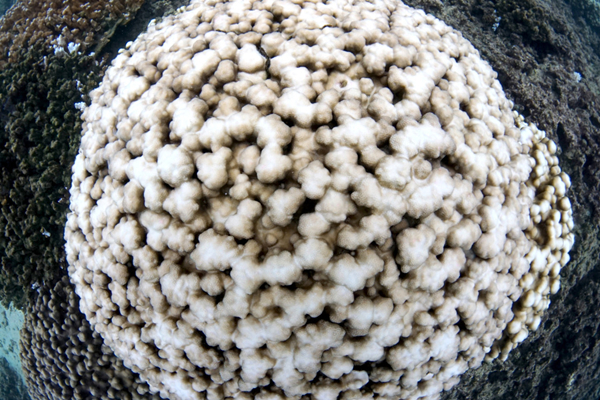El Niño prolongs longest global coral bleaching event: NOAA
 0 Comment(s)
0 Comment(s) Print
Print E-mail China.org.cn, February 26, 2016
E-mail China.org.cn, February 26, 2016
 |
|
A completely bleached coral in Hawaii during the main islands' first ever mass bleaching event in late 2014. [Photo/XL Catlin Seaview Survey] |
Also, as bleaching events become more frequent, some reefs may not have time to recover.
"The 2010 Southeast Asia event was only six years ago," said Eakin. "We're seeing global bleaching again now. Research shows that the frequency of mass bleaching events is increasing because of global warming. The corals are being hit again and again."
Coral bleaching happens when corals are stressed by conditions such as high water temperatures. Bleaching occurs when the corals expel the algae that live in their tissues. Without the algae, corals lose a significant source of food and are more vulnerable to disease. In a severe bleaching event, large swaths of reef-building corals die. This causes reefs to erode, destroying fish habitat and exposing previously protected shorelines to the destructive force of ocean waves.
Warmer ocean temperatures caused by El Niño and global warming can lead to coral bleaching. The first widespread mass bleaching occurred during the 1982-83 El Niño. The first global bleaching event occurred in 1998 during a strong El Niño that was followed by a very strong La Niña, which brings warmer waters to places like Palau and Micronesia in the Pacific. A second global bleaching event occurred in 2010, during a less powerful El Niño.






Go to Forum >>0 Comment(s)